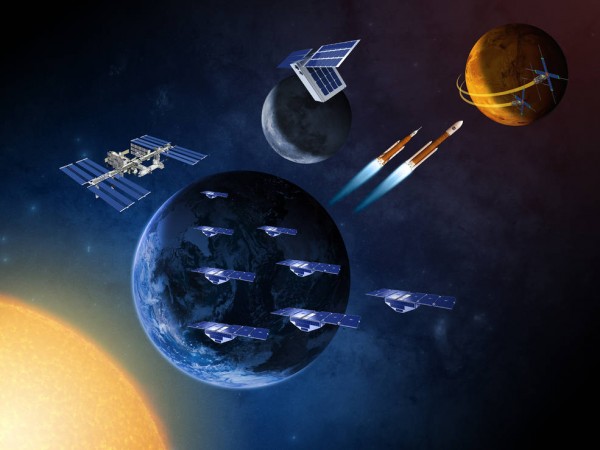By Ana Verayo, | November 09, 2016

The small spacecraft and satellites are helping NASA advance scientific and human exploration, reduce the cost of new space missions, and expand access to space. (NASA)
NASA will launch an army of tiny satellites in the next few months. The first one will be released this month. These cube-shaped satellites are estimated to be as small as a loaf of bread and the biggest one as big as a washing machine.
Mission scientists plan to launch these CubeSats which are designed to slash expensive production and launch costs to test new technologies in space.
Like Us on Facebook
The main function of these tiny satellites is to develop innovative ways to study Earth and other planetary bodies in the solar system. In the next several months, the CubeSats will orbit and observe our planet. Each of them weighs less than 400 pounds. The smallest is at 10 centimeters per side.
According to the director of NASA's Earth Science Division, Michael Freilich, using low cost, smaller satellites, NASA will be able to expand its satellite technology and systems including its miniature onboard instruments, to advance Earth sciences and develop new and useful applications.
The first batch of CubeSats will include four satellites. The first one will be the RAVAN (Radiometer Assessment using Vertically Aligned Nanotubes) satellite that will collect crucial measurements about the effects of greenhouse gasses on Earth's climate.
In spring, two CubeSats will arrive at the International Space Station known as the IceCube to measure cloud ice formations and HARP (Hyper-Angular Rainbow Polarimeter) which will measure airborne particles and cloud droplet sizes including the distribution across our planet's atmosphere.
The last one set for launch in 2017 is known as the MiRATA (Microwave Radiometer Technology Acceleration) satellite. It will obtain climate data such as temperature, water vapor, and cloud ice content for better weather and storm forecasting.
-
Use of Coronavirus Pandemic Drones Raises Privacy Concerns: Drones Spread Fear, Local Officials Say

-
Coronavirus Hampers The Delivery Of Lockheed Martin F-35 Stealth Fighters For 2020

-
Instagram Speeds Up Plans to Add Account Memorialization Feature Due to COVID-19 Deaths

-
NASA: Perseverance Plans to Bring 'Mars Rock' to Earth in 2031

-
600 Dead And 3,000 In The Hospital as Iranians Believed Drinking High-Concentrations of Alcohol Can Cure The Coronavirus

-
600 Dead And 3,000 In The Hospital as Iranians Believed Drinking High-Concentrations of Alcohol Can Cure The Coronavirus

-
COVID-19: Doctors, Nurses Use Virtual Reality to Learn New Skills in Treating Coronavirus Patients








